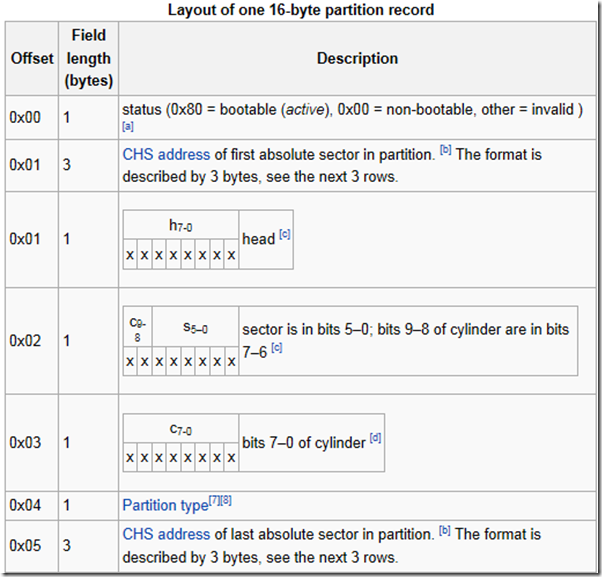Disk structure
A master boot record (MBR) is a type of boot sector popularized by the IBM Personal Computer.[1] It consists of a sequence of 512 bytes located at the first sector of a data storage device such as a hard disk. MBRs are usually placed on storage devices intended for use with IBM PC-compatible systems.
源文档 <http://en.wikipedia.org/wiki/Master_boot_record>
屏幕剪辑的捕获时间: 2011-07-09 11:33
屏幕剪辑的捕获时间: 2011-07-09 11:56
对硬盘进行分区操作
源文档 <http://www.opsers.org/base/one-day-a-little-learning-linux-partition-and-format-the-hard-drive.html>
屏幕剪辑的捕获时间: 2011-07-09 11:34
屏幕剪辑的捕获时间: 2011-07-09 11:34
The order of the four entries in the MBR need not correspond to the actual order of the partitions of the disk, and there may be gaps between the partitions and before the first one and after the last one. Some thought reveals that in the worst case, a disk may have as many as nine regions: four partitions and five gaps, like this.
屏幕剪辑的捕获时间: 2011-07-09 11:37
MS-DOS and Windows are normally configured with one primary partition and optionally one extended partition. In most cases, the primary partition is called C: an extended partition, if present, contains, D:, E:, etc., depending on how many logical drives have been created there. The advantage of putting D:, E:, etc inside an extended partition, instead of allocating each one its own primary partition, is that it leaves MBR partition table slots available for other operating systems. Below is an example disk showing one primary partition (C:) and one extended partition containing two logical drives (D: and E:).
屏幕剪辑的捕获时间: 2011-07-09 11:37
屏幕剪辑的捕获时间: 2011-07-09 11:48
屏幕剪辑的捕获时间: 2011-07-09 11:47
图 2. MBR 剖析
源文档 <https://www.ibm.com/developerworks/cn/linux/l-linuxboot/>













